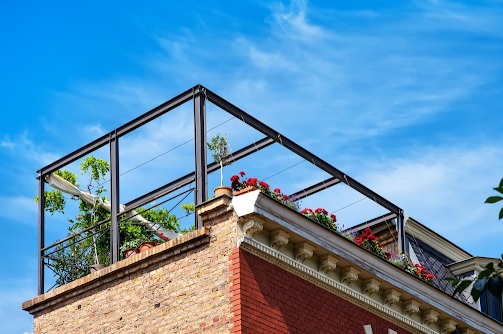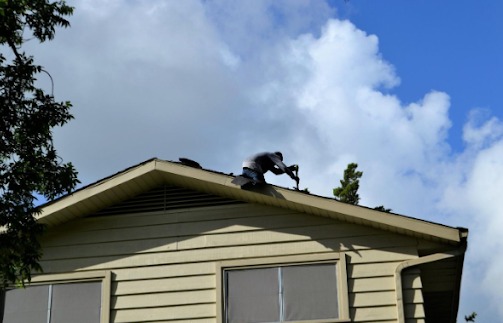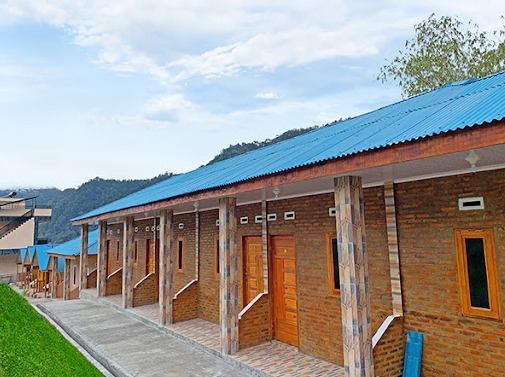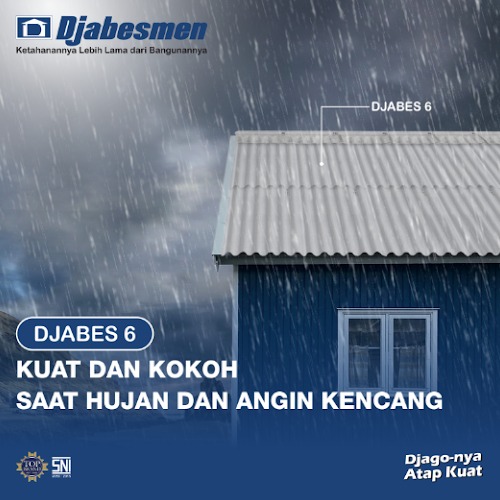Noisy Roof? Find the Best Solutions Here

Noisy sounds from the roof can often be unwelcome, especially when you seek peace and tranquility inside your home.
Moreover, this issue might indicate potential damage to the roof, which, if left unaddressed, could lead to more severe consequences. But fear not! There are plenty of ways you can tackle this problem!
Implementing various effective measures can transform your home roof into a quieter and more comfortable space.
3 Common Causes of Noisy Roof Sounds
3 common causes contribute to noisy sounds from the roof: thermal expansion and contraction, loose roof components, and excessive wind pressure.
- Thermal Expansion and Contraction
Thermal expansion and contraction are natural phenomena that occur in almost all types of materials, including those used for making roofs.
Roofing materials, such as metal or wood, will undergo changes in size when exposed to varying temperatures.
During hot weather, these materials will expand or bulge. Conversely, during cold weather, they will contract or shrink.
These changes in size can create noisy sounds, especially when temperature shifts happen suddenly.
For instance, building materials exposed to cold air will shrink during winter. However, roof sections not exposed to the cold air, such as those beneath insulation, will not experience shrinkage.
As a result, the shrinking and non-shrinking roof sections will collide, producing noisy sounds. This noise can become even louder when temperature changes occur drastically.
Additionally, some materials, like wood, can lose moisture during winter. This will make the material stiffer and more prone to creating noisy sounds when colliding with other materials.
- Loose Roof Components
Loose or detached roof components can also be a source of noisy sounds from the roof. Many components are involved in roof construction, such as soffits, fascia, chimney caps, and gutters.
For instance, a loose aluminum soffit can create noisy sounds when the wind blows. This noise is generated by the vibrations of the soffit colliding with walls or other roof components.
Other roof components that vibrate in the wind include fascia, chimney caps, and gutters. If these components become loose or detached, they can shake or collide with each other when the wind blows, resulting in noisy sounds.
- Excessive Wind Pressure
Your home roof is designed to protect you from various weather conditions, including strong winds. However, the roof can vibrate and produce noisy sounds with too intense wind pressure.
This is especially true for roofs made of lightweight materials, such as zinc or aluminum, which are more prone to movement than other roofing materials.
Moreover, the roof’s design can also influence how much wind pressure it can withstand. If your roof vibrates during strong winds, it may indicate that your roof’s construction is not strong enough to withstand the wind pressure.
In this case, you may need to perform some repairs or enhancements to your roof’s construction to make it more resilient against wind pressure.
6 Ways to Handle Noisy Roof Sounds
You can reduce or eliminate noisy sounds from the roof in several ways, ranging from applying insulation to consulting with professionals.
- Using Soundproof Paint
Soundproof paint is a particular type of paint designed to dampen sound. It works by absorbing sound and reducing the vibrations generated by it.
You can apply this soundproof paint to the inside of the roof to minimize noisy sounds. When using soundproof paint, follow the instructions provided by the manufacturer.
Some types of soundproof paint may require multiple layers for optimal results. Also, ensure that the paint is thoroughly dried before using the room.
- Installing Soundproofing on the Roof
Soundproofing is a unique material designed to absorb noisy sounds from the roof. You can install this soundproofing material on the inside of the roof to reduce the noise.
You can use several types of soundproofing, such as soundproofing panels or spray-on soundproofing materials directly applied to the roof.
Soundproofing panels are typically made of foam or mineral fibers and can be directly installed inside the roof.
Spray-on soundproofing materials are usually made of polyurethane foam or mineral fibers. They can be applied directly to the inside of the roof using a special spray.
- Installing Ceiling
A ceiling is an additional layer you install beneath the roof to dampen sound. It works by absorbing sound and reducing the vibrations generated by it.
You can use several types of ceilings, such as suspended ceilings or direct ceilings. Suspended ceilings are installed using a particular frame that hangs from the roof.
These ceilings are usually made of panels that can be easily installed and removed, making them ideal for rooms that frequently change layout.
Direct ceilings, on the other hand, are installed by directly attaching them to the underside of the roof. These ceilings are typically made of panels that are fastened using nails or screws, making them more permanent.
- Coating Roof Sections with Viscoelastic Material
A viscoelastic material is a type of substance that possesses excellent sound-damping properties. You can coat the inside of the roof with viscoelastic material to reduce noisy sounds.
When applying viscoelastic material to the roof, follow the instructions provided by the manufacturer. Some types of viscoelastic materials may require specific installation methods for optimal results.
Additionally, ensure that the material is thoroughly dried before using the room.
- Performing Roof Maintenance and Care
Regular roof maintenance and care can help prevent noisy sounds from the roof. This maintenance may involve inspecting for signs of damage, tightening loose roof components, and repairing the roof when necessary.
During routine inspections, examine all roof parts, including the roof frame, ridges, roof beams, gutters, etc.
- Consulting Roof Issues with Professionals
If you’re unsure about how to address the noisy sound issue on your roof, consider consulting with professionals.
Roofing professionals have the knowledge and experience to identify and address roof problems.
These are the common causes and ways to handle noisy sounds from the roof. If you need further assistance dealing with your roof issues, visit https://www.djabesmen.co.id/.
Djabesmen offers excellent roof solutions that effectively dampen sound. Moreover, Djabesmen’s durable and guaranteed quality roofs can withstand extreme weather changes!

Djabesmen Regains Top Brand No.1 Award for the Tenth Time
Djabesmen Won Top Brand Award
Read Post arrow_right_alt

Tips for Creating a Rooftop Garden
Planning to create a rooftop garden? Discover these valuable tips to elevate its charm and allure!
Read Post arrow_right_alt

Roof Repair Solutions for Urgent Situations
Here are some tips and emergency roof repair techniques that you can implement in critical conditions.
Read Post arrow_right_alt

Here are the Reasons Why Roofs Are Made with Corrugations
Why are roofs made with corrugations? Learn about its rationale and various benefits!
Read Post arrow_right_alt












